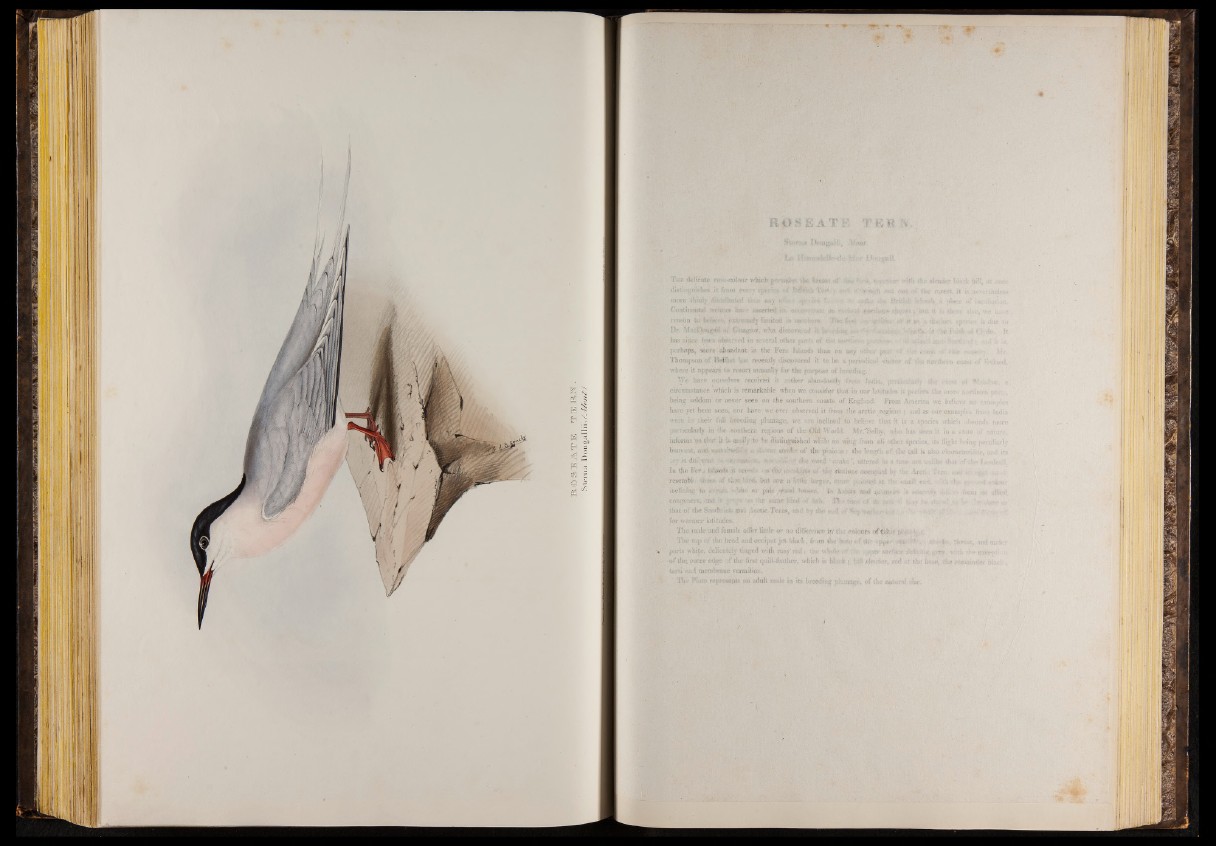
1R O §> E .A.T E T ' . i m n
Sterna. D o u ^ a l ln ; f.A /b7i£:J
R O p S A T S T E R .K
SffttftMi- IJougiiili, Moni-
; A - d e - M n - '
T h e delicate rose-colour which 'eeitaHdfyt ei*' <hw,: W*/. tio&yshcr v: .i!’. the »lender black
uiore tumlv. ■nivJrihoWt! tfiao JWM?- ¡ik&,n sfMi 0riabdi i’ibwfe ii .• 4»Ci- <■
ContirmutnS tvrifpf;r*-h a i ' Asserted, jib 'eivw-zzax- m s?.i:•.•<’•;, but i-i a .
reason to b ch ^ v e^ref.Bely limited t# 'sHrrslwt* :'^iyc few3 ^wftfowr* anee
Dr. M<tcl^t8|£ftli, of C»swgo«v, who discovered ft l^f^sNw ¿m> ,*,i,,‘i ■• WwW!^. *M V fljaifc 5
has siiice h**» dbieryed, in several other parts c4r efc« ¡¡ra'-t;;*?- u, ,.-4 .^- ¡¿i. ;. •
perhaps, move'abundant in the Fern Islands than on any other ¡a,,-- ■ • .. --
Thompson of Belfast !*iis recently discovered it to he a periodical visit??»* of the not¿1)« m c .;•-
where it appears to resost annually for the purpose of breeding.
We have ourselves received it rather abundantly -from India, ¡; : . ; ■ r -hi i
circumstance which is remarkable when we consider that in oar latitudes it »riders the wor<
being seldom or never seen on the southern- coasts of England. From America v»c believe
have yet been seen, nor have we ever observed it front the arctic regions * and as our example
were iir their full breedingplumage, we are inclined to believe that j t is a species which al
particularly in the southern regions of the Old World. Mr.^Ssihv, who has fceen it in a siid
informs^08- twa* M > -«a/dy tc bfc dUUnguished'wliile on wing from alt other species., its flight I -i
buoyant, ana *.fn, -* .jgfaifce of the pituoy» : the length o f tlte tail is also character
'jtj is dt&fjapt th« «vtwij * . ah; V uttered It» a tone not mdike that <sf:
In the For, (dpMb ?• ;* din • h,t-> oi ••»-. stations occtg .. ! :•■• .¡.
reserpbh ,«f that hhtiL '.ml a;*»*, a lit*}® mrgi »-, ■:-■-,<■.■ • m. :■ -••i.iii! <v
inclining' W ’Aue psile /.yooti hm*w fo -lim t* ?«<d
congeners,- and *f. §'■*:■?* •>«» t-He .saioc.k'tnd of feh-, 3.1? e t»p}«.-c*’ s* •. ...
that of the Sandiiicti tkvi Arctic Terns, and by she e«d of 5itip!eis>fo ¡••u;:
for warmer latitudes* !v
The male and female olfor little or no difference in* i'; . cr.h.nis ofihVir p.y
The top of the head and occiput jet black, from » f 'M" /Au f !i . i . f "v.v^,.
parts whitej delicately tinged with rosy red: the -yvhviljv:'G$ ;?«? snrfuce grev ;
o f the outer edge of the first quill-feather, which is black .$■;"hiii ^j««ier, red at the bhse,
Tnive Piate represents an adult male in its breeding plumage, of the nptaral-£aiie.
¡ ¡ I